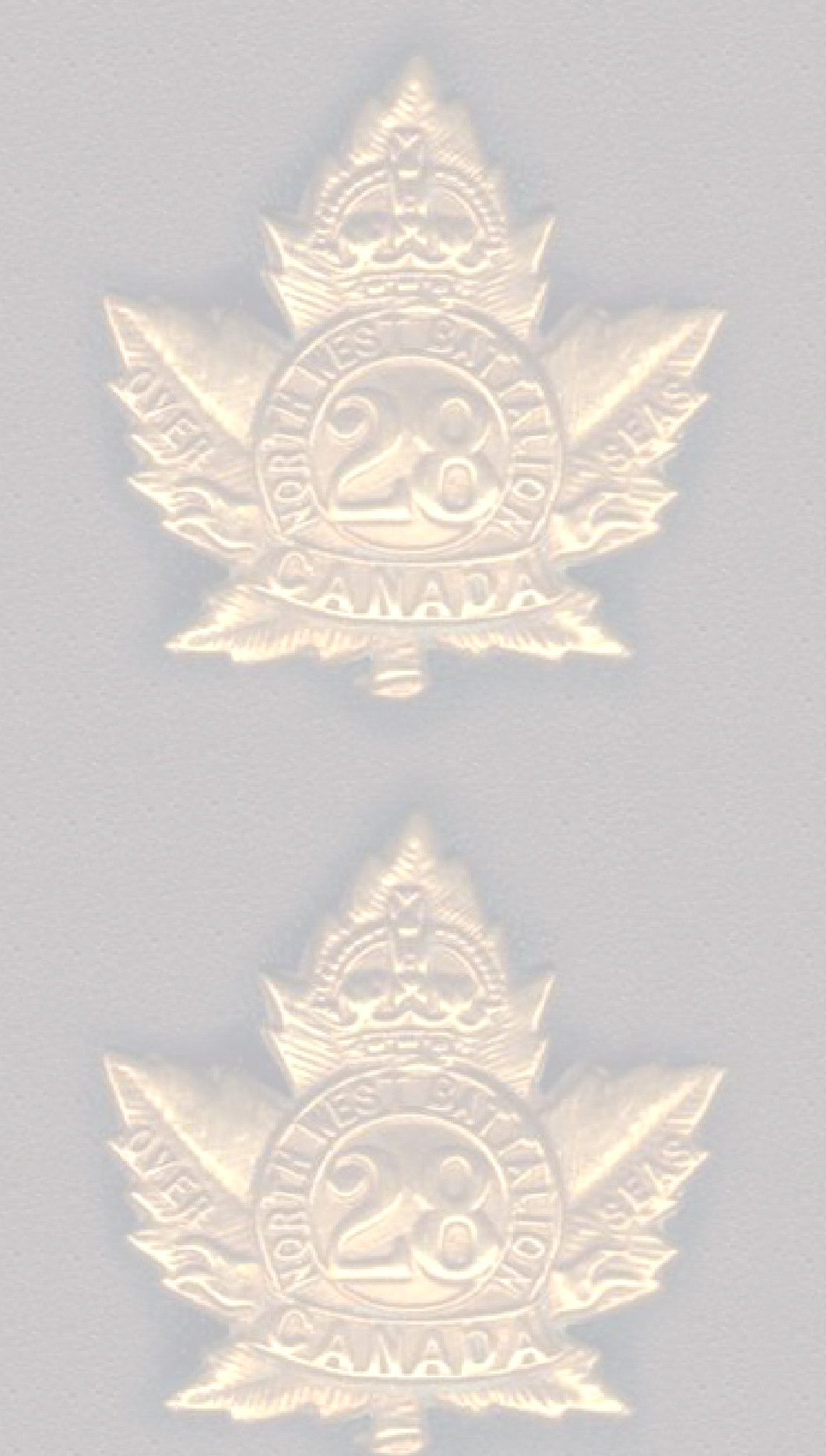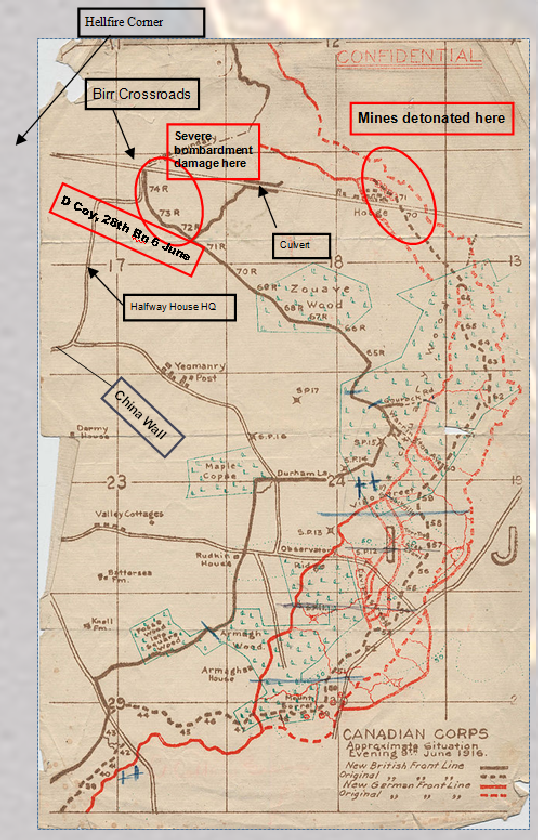
The War Diary of Lieutenant William L Hayes M C
1915—1919
1916 and the Battles for Ypres
Four kilometres east of Ypres, is a ridge between Hooge and Zwartelee about 30 meters high. This Bellewaerde Ridge provided excellent observation of the Ypres salient and the town itself. As a result, it was fought over continually throughout the war. The Germans held it in July 1915 and the British took it back in August 1915.
The Germans began preparations to retake sections of the salient ridge at the end of May and a devastating assault began on 2 June on the area from Mont Sorrel northwards. Losses were severe over the next few days, but 3 divisions of Canadians began a counter-
http://www.warmuseum.ca
Nicholson, page 152
Mont Sorrel—Hooge 2—14 June 1916
Canadian troops had been issued with the Canadian made Ross Rifle, but were soon abandoning it, preferring rifles they could salvage from the battlefield. The Ross Rifle was long and heavy, making it impractical for narrow trench work. When fired with the bayonet attached, the bayonet tended to fall off. It became dangerous to the rifleman in the dust, mud and dirt of battle field conditions. Also, it was intolerant of any other but Canadian made .303 ammunition.
There were political implications in its being retained, but by spring 1915 over 3000 men had discarded it in favour of the Lee Enfield even under the threat of punishment for so doing. Eventually, in the face of pressure from men, officers and the high command, it was replaced with the Lee Enfield, British-
Snipers continued to prefer the Ross rifle because of its long barrel. (Some were issued to the British Home Guard in WW2.)
28th Bn War Diary: ‘23 Aug 2.30 pm. All Ross Rifles turned in and Lee Enfields issued.’
http://www.ctvnews.ca/canada/100-
WLH/D Coy in trenches 6—8 June at Hooge, (D Coy in support trenches 72R and 74R)
13 June D Coy to China Wall, Birr Post and Ramparts (in Ypres),
20—27 June in trenches,
WLH: 6 June 16 promoted Corporal
21 (or 27) June 16 appointed acting Coy QMS with pay, in the field(QMS: Quartermaster Sergeant)

http://en.wikipedia.org/wiki/Battle_of_Mont_Sorrel
28th Bn War Dairy: 6 June 1916
‘Trenches 72R and 74R incl “C” and “D” Coys and one section Bn Bombers, HALFWAY HOUSE Bn HQ. Scouts and snipers, signallers and one Bn Bombers.’ (R =rear)
‘9 a.m. Enemy commenced shelling on front and support lines intensively, our artillery gave good support but owing to lack of communication with the front line it was impossible to ascertain exactly what was happening.’
‘3.30 pm Enemy blew four mines under trench 70, 71 and G/92 which it is believed …. practically wiped out the garrison.’
‘3.30 pm The garrison in Trenches 73-
13 June Bn relieved (by) 29th Bn Moved to Culvert Post, D Coy to China Wall, Birr Post and the Ramparts’ (Ypres)
After this battle, the Battalion, spent a few days in reserve, resting and being reinforced, then went back into the line where it stayed (on rotation) until September when it moved to the Somme.